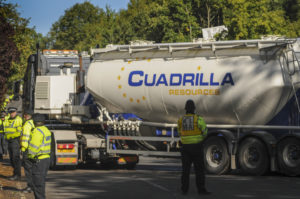BEC | Three Year Strategy April 2021
1. Vision – to see a high level of renewable energy locally owned, generated and used in the Greater Brighton area and wider region.
Our Mission – to promote, develop and deliver large community owned renewable energy projects in the Greater Brighton area and wider region.
Our current USP – we install and operate solar energy arrays on commercial and public buildings.
Possible future role – develop large scale solar installations, expansion into other technologies such as EV charging, wind energy and electricity supply to hydrogen production, investigate storage opportunities, spread our area of operation to southern counties, work with innovation projects & UKPN on flexibility. We don’t intend to deliver heat, energy efficiency or hydrogen production projects.
Opportunities – there is a growing need for renewables due to climate change, we are getting close to grid parity from a cost perspective, people continue to want to support us and invest.
Innovation – new technologies e.g., advanced batteries, data capture, smart systems, new sources of support funding.
Threats/Roadblocks – political and economic uncertainly, other organisations develop local projects.
Selection criteria: secure long terms PPA potential, reliable off taker to minimise counterparty risk, technology already established with improvement cycle, not risk takers unless grant funded, potential for solidity and continuity of income streams, technologies that allow scaling, high CO2 reduction potential, social/community benefit creation potential.
Barriers – resources to manage increasing assets at the same time as developing new opportunities, need to improve internal systems upon which to grow.
2. What we do
Marketing and communication – share offers to existing and potential members, communicating with third parties and prospective property owners.
Project Development – finding and liaising with potential customers, getting permission from DNOs, structural surveys, negotiating and signing leases.
Installing arrays – employing contractors, purchasing the panels, installing and registering arrays
Operating the arrays – inspection, maintenance and cleaning, meter readings, invoicing, repairs.
Community fund – using some of our surplus income to provide education and funding opportunities for other local environmental initiatives.
Consultancy service – Brighton Energy Consultancy Service is an opportunity to be further developed. 2
3. Action Plan
• Search for new sites for solar and other technologies that are heavy energy users.
• Secure new grant funding for project development.
• Introduce different share types and possibly bonds.
• Improve data monitoring and performance through use of Portsmouth University and appointment of an O&M Manager.
• Employ a part time Communications Manager to engage with shareholders, potential new investors and property owners through general meetings, events, newsletters, the website, social media. Celebrate BEC 10-year anniversary & use as vehicle for community engagement.
• Run an internship programme from November 2020 to July 2021
• Keep under review data protection policy, risk register and KPIs.
• Ensure the health and safety policy is up-to-date and is a standing item on the Board agenda.
• Review lease template including safeguarding export connection.
• Business continuallity – maintain the O&M Manual and upgrade our information systems.
• Develop policy on use of operating surplus and for the Community Fund over the long term.
• Build partnerships with other energy Co-ops.
• Input into the development of energy strategies for the area
• Share the finalised Strategy with members for their input before 30/06/21.
• Explore requirements and potential solutions for managing risk profiles between FIT and post FIT assets.
Targets
By September 2021: Have installed 10 EV charging points and gained usage and behavioural data.
By July 2023: Have managed ERDF grant payments for 2MWs of PV and 12 EV charging points.
By April 2024: Have installed minimum 6MW of community owned PV by September 2023 (3.55MW in April 2021)
By April 2024: Have diversified into other linked technologies such as EV charging, batteries, energy for H2 production.
By September 2030: Have installed 20MWs of community owned PV in South East, this is broadly based on a 6-fold deployment of PV required according to National Grid future energy scenarios.


